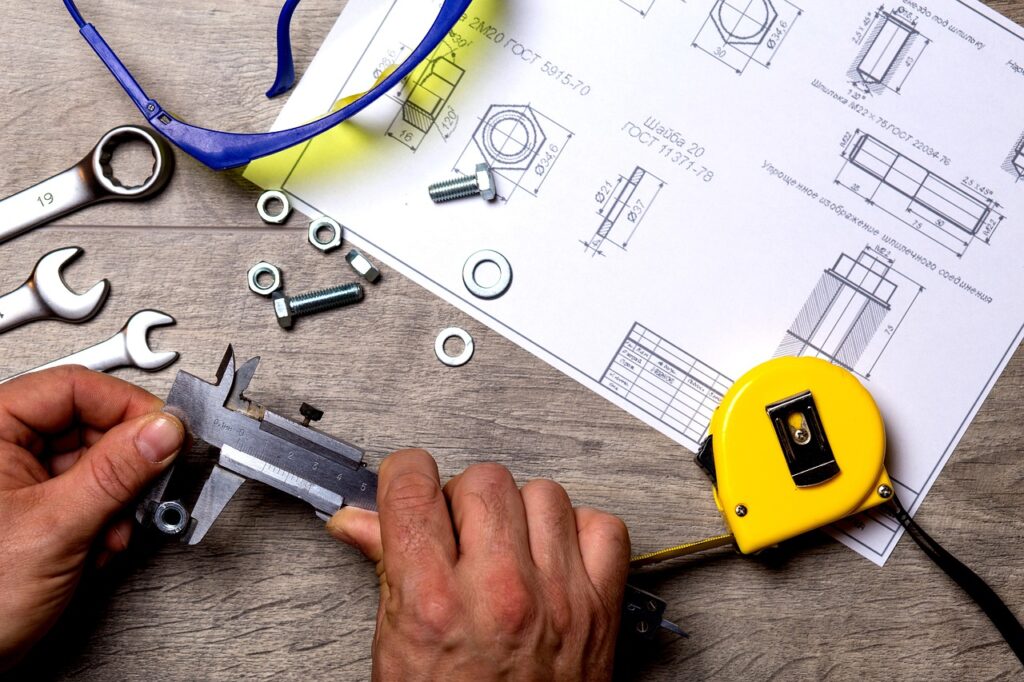To Share is to Show You Care!
When it comes to DIY projects, measuring accurately is key to achieving the desired outcome. However, measurement errors can easily occur, leading to frustration and wasted time and money. In this post, we’ll explore common measurement errors in DIY and provide practical solutions to avoid them.
Common DIY Measurement Errors
1. Using the Wrong Tool: Using the wrong tool can result in inaccurate measurements. For example, using a ruler instead of a tape measure for longer distances or using a level that is too short for the project.
2. Incorrect Placement of the Tool: Even with the right tool, incorrect placement can result in measurement errors. For instance, placing a level on a surface that is not flat or using a tape measure that is not held straight can cause inaccurate measurements.
3. Inconsistent Measurements: Inconsistency in measurements can also lead to errors. This often happens when using different tools for the same project or when using a tool in a different way each time.
Solutions to Avoid DIY Measurement Errors
1. Use the Right Tool for the Job: Before starting your project, ensure that you have the right tools for the job. This will help you to take accurate measurements.
2. Check the Placement of the Tool: Double-check that the tool is correctly placed before taking measurements. For instance, ensure that the level is on a flat surface, and the tape measure is held straight.
3. Calibrate Your Tools: Regular calibration of your tools can help ensure that they are accurate. For example, a tape measure may stretch over time, leading to inaccurate measurements. To calibrate your tape measure, measure a known distance and compare it to the measurement on the tool.
4. Take Multiple Measurements: Taking multiple measurements using the same tool can help you to detect any inconsistencies. This will enable you to take the average of the measurements to get a more accurate result.
5. Practice: Practice makes perfect. The more you practice measuring, the better you will become. You can also try measuring the same object using different tools to see which one works best for you.
Frequently Asked Questions:
Q1: What are the 5 errors associated with measurements?
A: The five errors associated with measurements are systematic error, random error, blunders, environmental error, and interpolation error.
Q2: What are the 3 types of measurement error?
A: The three types of measurement error are systematic error, random error, and blunders.
Q3: What are three 3 main sources of measurement error?
A: The three main sources of measurement error are the person taking the measurement, the equipment used for the measurement, and the environment in which the measurement is taken.
Q4: What are examples of measurement errors?
A: Examples of measurement errors include a stopwatch not being reset, an instrument not being calibrated correctly, or a ruler being read incorrectly.
Q5: What are common measurement errors?
A: Common measurement errors include parallax errors, instrument drift, and rounding errors.
Q6: What are random errors with measuring?
A: Random errors with measuring refer to errors that are caused by unpredictable and uncontrollable factors that affect the accuracy of the measurement.
Q7: What are random errors of measurement?
A: Random errors of measurement refer to errors that occur due to chance variations in the measurement process.
Q8: What are two possible causes of errors when measuring?
A: Two possible causes of errors when measuring is a lack of precision in the measuring instrument and human error in taking the measurement.
Q9: What are examples of random errors?
A: Examples of random errors include fluctuations in temperature or humidity, variations in the amount of pressure applied to an instrument, or the occurrence of electrical noise.
Q10: What are 3 ways to avoid measurement error?
A: Three ways to avoid measurement error are to use calibrated instruments, take multiple measurements, and minimize environmental factors that could affect the measurement.
Conclusion
Measurement errors in DIY can be frustrating and time-consuming. However, by using the right tool, checking the placement of the tool, calibrating your tools, taking multiple measurements, and practicing, you can avoid these errors and achieve accurate measurements for your projects.
The Informed Minds
I'm Vijay Kumar, a consultant with 20+ years of experience specializing in Home, Lifestyle, and Technology. From DIY and Home Improvement to Interior Design and Personal Finance, I've worked with diverse clients, offering tailored solutions to their needs. Through this blog, I share my expertise, providing valuable insights and practical advice for free. Together, let's make our homes better and embrace the latest in lifestyle and technology for a brighter future.

